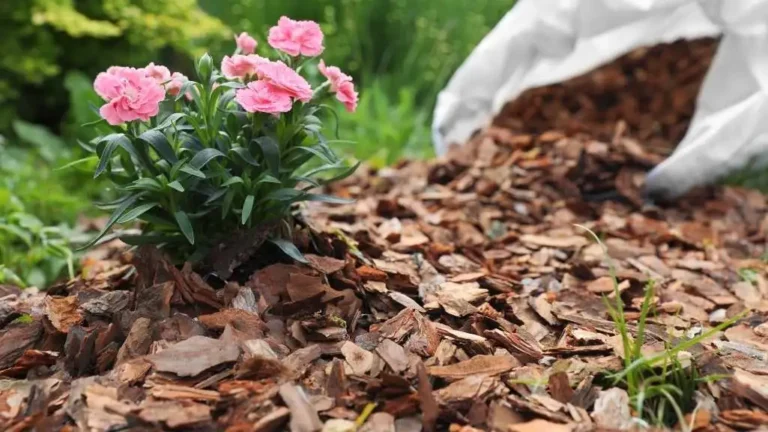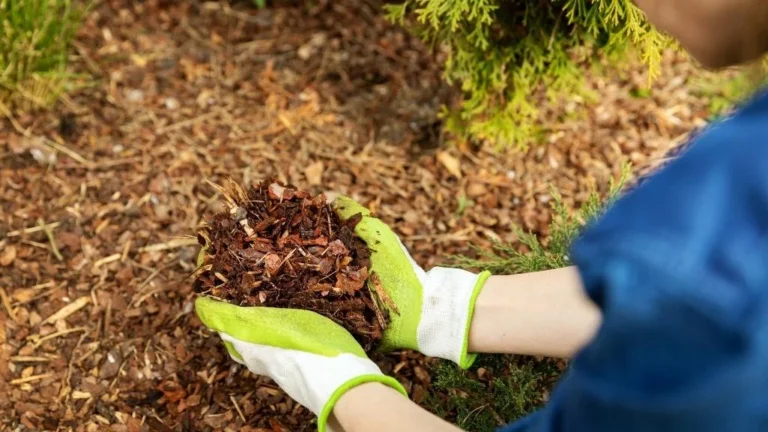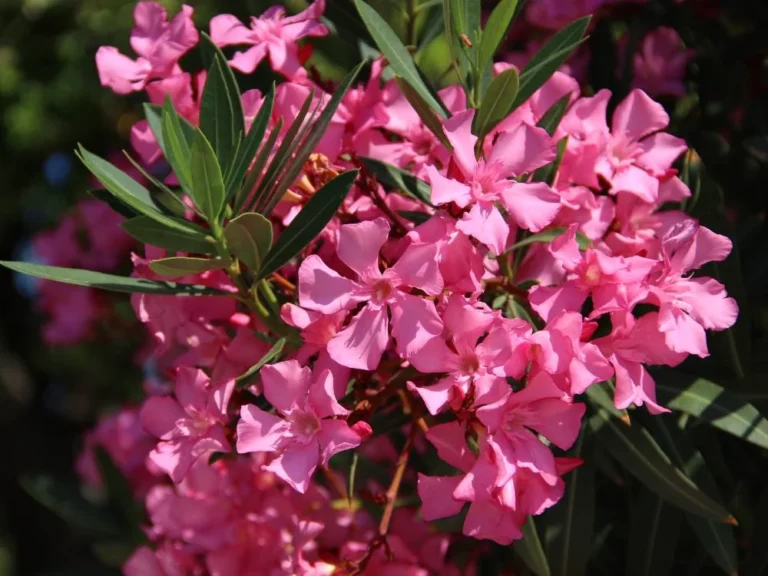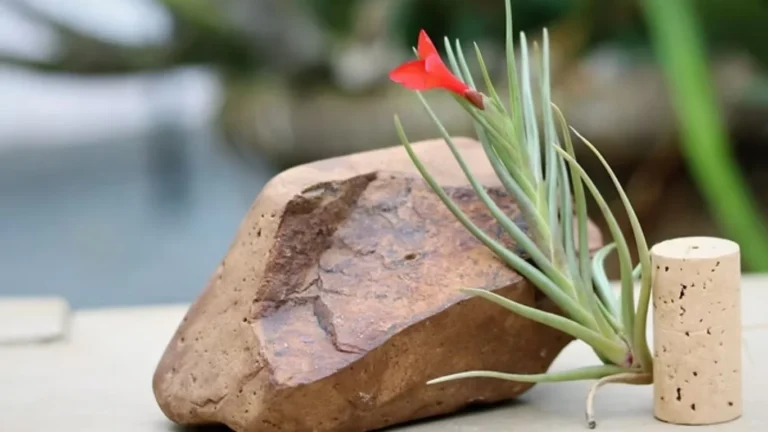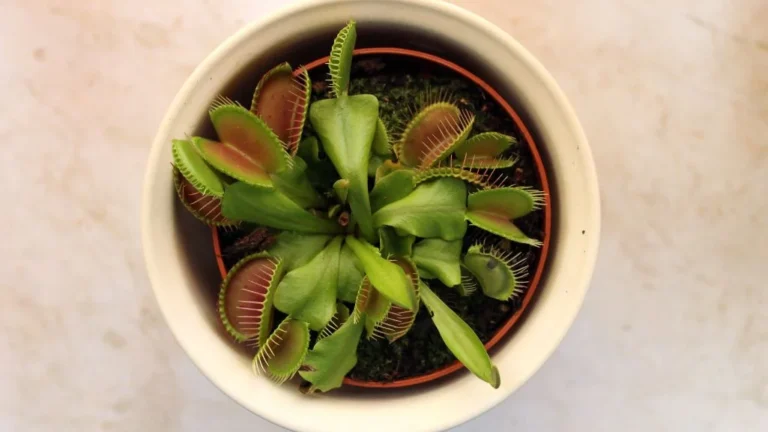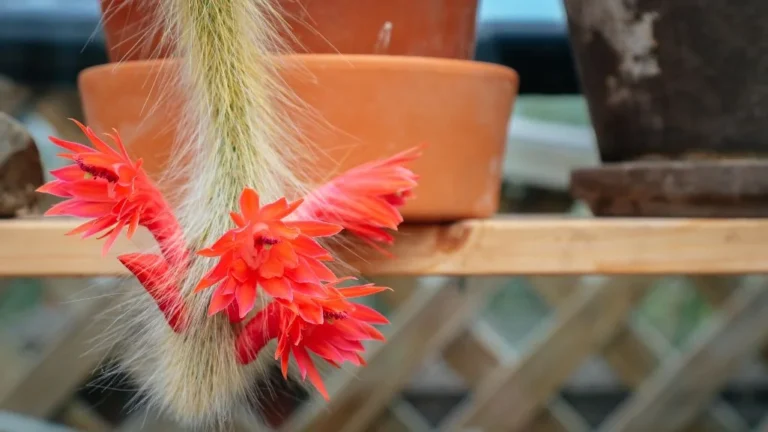When I first saw the Peruvian apple cactus plant, it was adorned with big, white flowers. And the smell was fantastic, too. Then I learned that the flowers only last a night and sometimes leave a tasty fruit behind. The fruit, known as the Peruvian apple, has bright pink skin; inside, the white flesh is juicy and filled with tiny seeds. The taste is gently sweet, like a mix between dragon fruit and kiwi. I like the taste of this fruit.
When I brought Peruvian apple cactus to my home, I learned it’s a tough plant, thriving in conditions where others might struggle. It doesn’t need much water, which is perfect for someone like me who tends to forget about their plants from time to time. It’s also quite forgiving of poor soil, as long as it’s well-draining and loves basking in full sun.
Facts about Peruvian Apple Cactus Plant
Scientific name | Cereus repandus |
Family | Cactaceae |
Native | South America |
Hardiness Zone | USDA Zones 9 to 11 |
Plant Type | Perennial cactus |
Bloom Time | Late Spring to Summer |

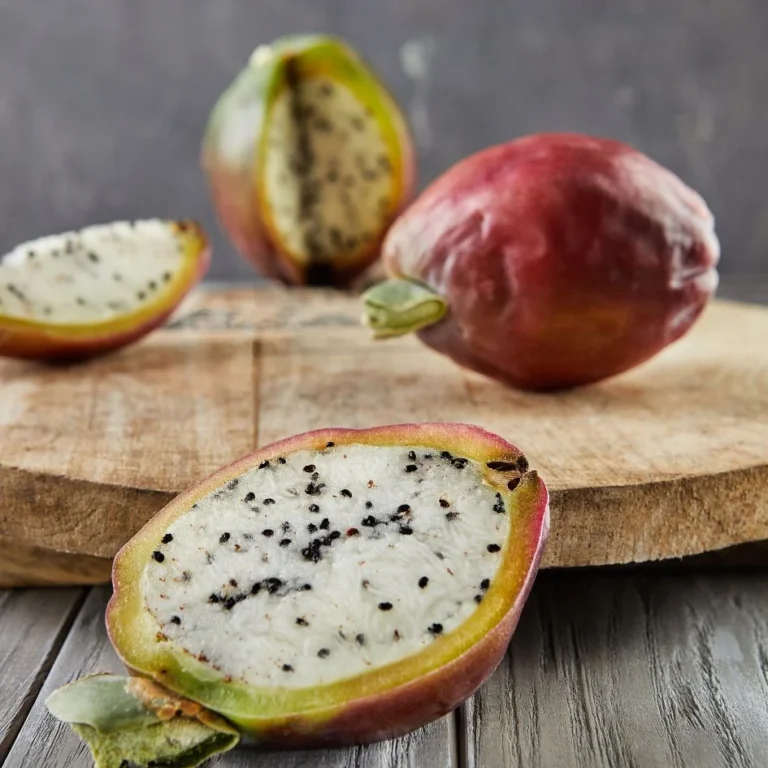
How Peruvian Apple Cactus Looks
Stem
The Peruvian Apple Cactus has tall, cylindrical stems that are ribbed and covered with sharp spines. The skin of the stem is blue-green, giving it a distinctive appearance.
Height
The Peruvian Apple Cactus is a tall plant that can reach up to 30 feet, making it an impressive presence in any landscape.
Peruvian Apple Cactus flowers
The Peruvian Apple Cactus flowers bloom at night, with fragrant white flowers that create a striking contrast against the blue-green stems.
Peruvian Apple Cactus Fruit
The Peruvian Apple Cactus fruit, scientifically known as Cereus repandus, is a unique and delicious fruit. The fruit, often referred to as pitaya or simply the “Peruvian Apple Cactus fruit,” has a tough, leathery skin that ripens to a reddish or yellow hue, depending on the variety. Inside, the flesh is tender and juicy, with a subtle sweetness that has been compared to a blend of kiwi and melon. The pulp is dotted with tiny, edible black seeds, giving it a texture similar to dragon fruit.
Peruvian Apple Cactus Plant Growing Requirements
Sunlight
The Peruvian apple cactus thrives in full sunlight, requiring at least 6-8 hours of direct sunlight daily for optimal growth and flowering.
Water
The Peruvian apple cactus prefers infrequent watering, requiring deep but infrequent irrigation, allowing the soil to dry out completely between waterings to prevent root rot.
Soil
The Peruvian apple cactus prefers well-draining soil, ideally a sandy or rocky mix that prevents water retention.
Temperature
The Peruvian apple cactus thrives in temperatures between 70°F to 100°F (21°C to 38°C), and can tolerate brief periods of cooler temperatures down to about 30°F (-1°C).
Humidity
The Peruvian apple cactus thrives in low humidity environments, making it well-suited for dry, desert-like conditions.
Fertilizer
The Peruvian apple cactus benefits from a balanced, low-nitrogen fertilizer during the growing season. A cactus-specific fertilizer or a general-purpose fertilizer with a ratio like 5-10-10 is ideal, applied every 4-6 weeks.
Mix the Soil Properly
For the Peruvian Apple Cactus, use a well-draining soil mixture to prevent root rot and ensure healthy growth. A good soil mix I use includes:
- 2 parts of cactus or succulent soil,
- 1 part of perlite or pumice to improve aeration and drainage.
- 1 part of coarse Sand to mimic the cactus’s natural desert environment and prevent water from pooling around the roots.
- Lastly, I add some organic matter, such as coconut coir or compost, to retain moisture while allowing for drainage. Organic matter should be used sparingly to avoid overly moist conditions.
Choose the Right Container
The Peruvian Apple Cactus has a deep taproot with lateral and fibrous roots that spread widely, providing stability and efficient water absorption. So, while choosing a container, ensure the following.
- The container has proper drainage holes.
- Container that is slightly larger than the root ball of your cactus. The cactus has a deep root system, so a tall, narrow pot is ideal. Ensure there is enough room for the roots to grow without crowding.
- Use a container made of materials like terracotta or ceramic. Terracotta is especially beneficial as it is porous, allowing excess moisture to evaporate, which helps prevent root rot. However, plastic pots can work if they have sufficient drainage holes.
I’ve placed my Peruvian apple cactus in a terracotta pot. Regarding the container’s weight, I suggest choosing a lightweight one, especially if you plan to move the cactus indoors or outdoors with the seasons. A heavier pot can stabilize the tall cactus but may be challenging to move.
How Much Sunlight Peruvian Apple Cactus Needs?
Peruvian apple cacti require bright, direct light mainly because they are native to desert conditions and receive intense sunlight throughout the day. Besides mimicking the native environment, this plant should be provided with direct light for growth, flowering, and disease prevention.
- Peruvian apple cactus flourishes when it gets at least 6 to 8 hours of direct sunlight. This will help your plant to grow at its best, and you can also observe the blur-green coloration.
- If you want to grow Peruvian apple cactus indoors, place it near a south-facing window where it will get enough light. If natural light is insufficient, supplement with grow lights to mimic its natural environment. But in that case, the plant may not grow optimally, and flowering can be less.
- Insufficient light may result in fewer blooms or none at all.
- Although the cactus is sun-loving, it can still get sunburned if suddenly exposed to intense sunlight, especially after being in the shade. Gradually acclimate the plant to increased light levels to avoid sunburn.
Maintain Temperature and Humidity
The Peruvian Apple Cactus thrives in warm temperatures, ideally between 65°F to 85°F (18°C to 29°C). It can tolerate higher temperatures, especially with adequate water, but it’s sensitive to cold and should be protected from frost. If temperatures drop below 50°F (10°C), bringing the cactus indoors or providing protection is best. Consistent warmth encourages healthy growth and flowering.
The Peruvian Apple Cactus prefers low to moderate humidity levels, similar to its natural desert environment. It thrives in dry air and does not require high humidity. If your native environment is too humid, ensure good air circulation around the cactus to prevent mold or fungal issues. Placing the cactus in a well-ventilated area in humid climates helps maintain its health.
When & How to Water Peruvian Apple Cactus
The Peruvian Apple Cactus prefers deep, infrequent watering, with the soil drying out completely between waterings. Because its natural habitat is arid, it is adapted to store water in its thick stems, allowing it to thrive in dry conditions and avoid root rot caused by constantly moist soil.
- So, water the cactus deeply but infrequently, allowing the soil to dry out completely between waterings.
- Water deeply until water runs out of the drainage holes. This ensures the roots are reached but allows the soil to dry out completely before watering again.
- Adjust the watering frequency based on environmental conditions; in hot, dry climates, you may need to water more often, while in cooler, more humid conditions, less water is required.
Typically, I water my Peruvian apple cactus every 2-3 weeks during its growing period (summer & spring) and once a month during winter. I always try to adjust the watering routine depending on the temperature and humidity.
Fertilizer for Peruvian Apple Cactus
For the Peruvian Apple Cactus, use a balanced, water-soluble cactus fertilizer with an N-P-K ratio of 10-10-10 or 15-15-15. Fertilize sparingly, typically once a month during the growing season (spring and summer), and avoid fertilizing in the dormant season (fall and winter) to prevent nutrient buildup and potential root burn.
When & How to Re-pot
I usually report my Peruvian apple cactus every 2-3 years when it becomes root-bound or outgrows its current pot. Here is the process.
Timing
Repot in the spring or early summer, during the growing season, to minimize stress on the plant.
Choose a Larger Pot
Select a pot that is 1 to 2 inches larger in diameter than the current one, with good drainage.
Prepare the Soil
Use a well-draining cactus mix, and optionally, add perlite or pumice for better aeration.
Remove the Cactus
Gently remove the cactus from its old pot. If necessary, use a soft brush or tool to loosen the roots. Be careful not to damage them. At that time check for any signs of rot or damage, and trim away unhealthy roots with sterile scissors.
Re-pot
Place the cactus in the new pot and fill in with the prepared soil mix. Ensure the plant is centered and the soil level is the same as in the previous pot.
Water Lightly
After repotting, wait about a week before watering to allow the roots to recover and adjust to the new soil.
Does the Peruvian apple cactus need pruning
The Peruvian Apple Cactus generally does not require regular pruning. However, occasional pruning may be beneficial for:
- Removing dead or damaged,
- Controlling size, and
- Encouraging growth.
Use sterile tools and make clean cuts to minimize the risk of infection.
Protect Peruvian Apple Cactus from Pest
Pests like spider mites, aphids, mealybugs, scale insects, and thrips can attack Peruvian apple cactus plants.
Steps for pest prevention
- Isolate new plants before placing them near your existing cactus to ensure they are pest-free.
- Inspect your cactus for early signs of pests so you can address issues before they become severe.
- Don’t overwater the plant. Overwatering can attract pests.
- If you spot pests, treat them immediately. Remove any visible pests with a cotton swab dipped in rubbing alcohol, and consider a more thorough treatment if necessary.
Dealing with Common Issues
Soft, mushy stems
If your cactus feels soft or mushy to the touch and has yellow or brown patches, it may be overwatered, and you might notice a sour smell, indicating root rot. Allow the soil to dry out completely, and trim any rotted parts before repotting in well-draining soil.
Shriveling or wrinkling stems
When the cactus appears wrinkled or shriveled or grows stunted, it could be under-watered. Check the soil if it’s too dry, and give the plant a good drink. Ensure the soil is evenly moist but not waterlogged.
Brown spots on the stem, faded appearance
Sunken, brown spots, or a faded, bleached appearance could mean your cactus suffers from sunburn. In this case, move the cactus to a location with indirect sunlight or provide partial shade during the hottest part of the day.
Blackened with mushy stems
Blackened or mushy areas may indicate frost damage and uneven growth, a sign of temperature stress. To address frost damage and temperature stress, protect the cactus from cold temperatures and sudden changes, and ensure it is kept in a stable, warm environment.
Yellowing of older parts and slow growth
Yellowing of older parts of the cactus and slow or stunted growth signals a nutrient deficiency. Feed the cactus with a balanced cactus fertilizer according to the package instructions to resolve a nutrient deficiency.
Propagation Process of Peruvian Apple Cactus
Propagation can be rewarding and allows you to grow new cacti from your existing plant. The Peruvian Apple Cactus plant can be propagated through cuttings. The process is as follows.
Caution
Peruvian apple cacti have sharp spines that can cause injury. Wear gloves during propagating and pruning to protect your hands.
Choose a healthy part
Select a healthy, mature part of the cactus. It should be free of pests and diseases.
Cut the part
Use a clean, sharp knife or scissors to make a clean cut at the base of the segment. Allow the cutting to dry and callous over for a few days to prevent rot.
Prepare the pot
Fill a pot with well-draining cactus soil or a mix of sand and perlite.
Plant the cutting
Insert the calloused end of the cutting into the soil. Firm the soil around the cutting to hold it in place.
Water lightly
Water the cutting lightly and wait until roots develop before watering more frequently.
Provide indirect light
Place the pot in a location with bright, indirect light. Avoid direct sunlight until the cutting has established roots.
Monitor growth
After a few weeks, gently tug the cutting to check for resistance, indicating root development. Once well-rooted, you can treat it like a mature cactus.
Tips for Peruvian Apple Cactus Flower
- Ensure it gets plenty of bright, direct sunlight during its growing period to get the Peruvian apple cactus flower.
- Keep the cactus in a warm environment, ideally between 70-85°F (21-29°C) during the day and not below 50°F (10°C) at night.
- Use well-draining soil to prevent root rot and ensure the cactus is in a pot with drainage holes. Water the cactus thoroughly when the soil is dry, but avoid overwatering. Reduce watering during the winter months.
- Use a balanced cactus fertilizer during the growing season (spring and summer) to provide essential nutrients.
- Introduce a period of cooler temperatures (around 50-60°F or 10-15°C) in the winter to simulate its natural dormancy period, which can help stimulate blooming.
- Minimize repotting and other disturbances while the cactus is preparing to bloom.
By following these tips, you can help create the optimal conditions for your Peruvian Apple Cactus to produce its stunning night-blooming flowers.
Frequently Asked Question
Can Peruvian apple cactus be eaten?
Yes, you can eat the fruit of the Peruvian Apple Cactus, also known as “Pitaya.” The fruit is mildly sweet with a texture similar to a kiwi, and it is often eaten fresh or used in smoothies and desserts. The cactus’s flowers and pads are generally not eaten, as they are primarily valued for their ornamental qualities and fruit production.
When to pick Peruvian apple cactus fruit?
Look for signs of ripeness to determine when to pick Peruvian Apple Cactus fruit. Depending on the variety, the fruit’s skin will change to a vibrant color, such as red or yellow. It should feel slightly soft but not mushy, indicating it’s ready to eat. The skin might also develop a wrinkled somewhat or dry appearance. Additionally, the fruit should detach easily from the plant with a gentle tug. If it resists, it likely needs more time to ripen. Harvesting at the right time ensures the fruit is at its sweetest and most flavorful.



